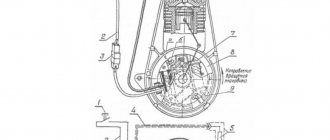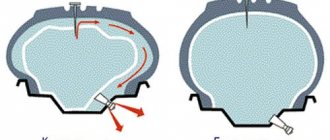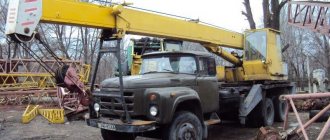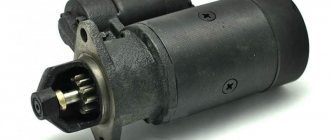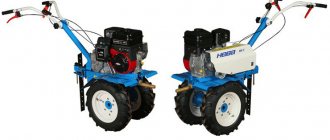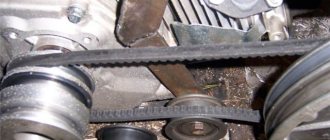With the onset of cold weather, private farm owners are faced with the problem of snow removal. Previously, snow shovels were used for this; nowadays, almost every household has a walk-behind tractor, which can be adapted for these purposes using a special blade. You can buy a shovel blade (blade) in a specialized store (which is quite expensive), or you can make it yourself. By making such equipment yourself, you will save quite a significant amount and will not spend a lot of time.
Description
A plow blade for a walk-behind tractor is an attachment that is widely used at any time of the year by owners of personal plots.
Review, application, use - we will talk about all this in this article. Using a blade you can perform the following work:
- clear snow along roads, sidewalks, in the yard and adjacent areas;
- level soils, screenings, sand;
- rake - shovel away garbage;
- if the blade is made in the form of a bucket, perform loading operations.
Design Features
First, let's define the design itself. A walk-behind shovel is a curved working surface that consists of the following elements:
- rigid frame;
- stiffeners;
- curved steel sheet 2 mm thick;
- heels (2 pcs.);
- knives (metal and rubber).
A metal knife is used for excavation work, when it is necessary to level the ground, etc. In cases where areas are cleared of snow, debris, etc., a rubber knife (gentle) is used, which will protect the nozzle itself from damage upon contact with solid covering, and pavement (tiles, asphalt, concrete).
A standard shovel is 100 cm wide and 40 cm high.
There are two types of walk-behind blades, which have some visual differences in their design:
A shovel blade for a walk-behind tractor is intended only for clearing areas of debris, snow, and is used for leveling crushed stone, soil and sand. The bucket is closed at both ends with welded plates, so in addition to the actions already described, it can also be used for loading the same sand, earth, snow, garbage, etc.
We invite you to look at the photo, which shows how a shovel differs from a bucket:
Installation type relative to walk-behind tractor
Due to the relative simplicity of the design, relatively low weight (up to 16 kg) and great functionality of the work performed, the dumps can be attached to both medium and heavy walk-behind tractors.
Depending on the design of the walk-behind tractor itself, the canopy can be attached to:
- to the front;
- behind the motorized device, taking into account that the steering column of the latter rotates 180 degrees around its axis.
Location of the working body
There are two types of dumps:
- adjustable (rotary);
- unregulated.
Rotary blades are universal, as they allow you to set the required angle of attack:
- right tilt;
- left tilt;
- direct installation.
Non-adjustable canopies are rigidly fixed in the position required by the operator (straight, right, left) and are not subject to adjustment.
We invite you to watch a video of a walk-behind tractor using a straight and rotary blade:
Types of hitches for walk-behind tractors of famous brands
The hitch is an indispensable device that comes complete with a walk-behind tractor, which allows you to aggregate various attachments. Depending on the brand of walk-behind tractor and its design, the configuration of the hitch itself also changes. In addition, hitches are also adjustable (angle of attack, horizontal) and non-adjustable.
There are several types of fastenings:
Types of lifting mechanism
Lifts allow you to raise and lower the working element (blade for a walk-behind tractor), and perform loading and cleaning work. There are several types of lifts:
- manual or mechanical (lever);
- hydraulic (using a hydraulic pump).
Do you need a license for a walk-behind tractor?
No, they are not needed. And that's why!
- As we indicated above, the procedure for admission to driving self-propelled vehicles is established by PPRF No. 796 - in particular, this regulatory act regulates the mandatory rights for a walk-behind tractor. But there is no direct indication that such a device requires a driver’s license.
- However, in pursuance of this Government Resolution, Order No. 807 of the Ministry of Agriculture and Food was issued, which in paragraph 3 directly states that self-propelled machines mean tractors, except walk-behind tractors.
However, there is a great subtlety here - the above Order establishes instructions for the procedure for admission to driving, but does not directly say that a driver’s license of any category is not required to drive a walk-behind tractor with or without a trailer.
But keep in mind that all these documents apply to walk-behind tractors that develop less than 50 km/h by design. Of course, you are unlikely to find a device that will go faster (as a rule, they generally go no more than 20 km/h), but we warned you just in case.
With or without a trailer?
Please note that nowhere in the legal acts is there a definition of driving a vehicle. On the one hand, it is logical that if you drive a walk-behind tractor, then you actually control it. That is, all fines also apply to those situations when you use it without a cart and move as a pedestrian.
On the other hand, the traffic rules contain a definition of a pedestrian who drives various types of equipment, and a walk-behind tractor, as well as “other self-propelled vehicles” are not among such equipment.
Consequently, the legislation of 2022 does not separate two cases: when you are riding a walk-behind tractor with a trailer or driving it in front of you - all this is control.
Model range of walk-behind blades
We invite you to familiarize yourself with popular factory models.
Snow plow Grunfeld DB360 to MF360
Characteristics:
- Weight, kg: 30
- Brand Country: China
- Plow rotation angle, degrees: 30
- Working width, mm: 900
Motoblock blade “Neva”
Characteristics:
Can be mounted on Neva and Salyut walk-behind tractors
Universal shovel Bertolini 80 cm
Characteristics:
- Working width 80 cm
- Can be aggregated to VT401, VT403
Universal shovel for walk-behind tractor LP-1
Characteristics:
- Working width: 100 cm.
- Grip height: 40 cm.
- Weight: 16 kg.
ZIRKA DB360
Characteristics:
Spade blade “Centaur” 1080
Characteristics:
Is it possible to drive on the roads?
And again we return to the definition of a walk-behind tractor in the Admission Rules - paragraph 2 speaks specifically about those self-propelled vehicles that are not intended for additional special equipment. You will also probably find in the instruction manual for your model that such equipment is not allowed on the roads.
Please also note that roads according to traffic regulations also include shoulders and sidewalks, and not just the roadway, and therefore you can expect a fine for driving a walk-behind tractor not only directly on the asphalt part of the road, and also not only on the asphalt road in principle. According to the same Rules, a road can be not only a developed one, but also a strip of land or other surface adapted for traffic. That is, a dirt track where at least someone has already passed before you is already a road.
So, in fact, where does the fine come from if you don’t need a license to ride a walk-behind tractor?! Below we will explain this situation in more detail.
Do-it-yourself plow for a walk-behind tractor, drawings, video
Many owners of agricultural equipment are interested in whether it is difficult to make a blade for a walk-behind tractor with your own hands, because a homemade shovel is no worse than a purchased one, and besides, there is an excellent opportunity to save money.
How much will a purchased shovel cost? Starting from 1800 rub. Up to 10,500 rub.
If you use available materials, a sheet of steel, an old barrel, a gas cylinder, pipes and angles of a suitable size, the price will decrease sharply.
We offer several different ideas with drawings that will help you make universal equipment with your own hands.
Shovel from a barrel on a walk-behind tractor
Don’t rush to throw away the 200-liter barrel that is taking up space in the garage; turn it into an assistant - a shovel-dump that will help out in various situations. We offer several diagrams and drawings that will help create this attachment:
After studying the drawings in detail, prepare all the necessary equipment and materials. To work you will need:
- tin sheets, at least 3 mm thick. The dimensions of the sheets should be 85 x 22 x 45 cm;
- 1 metal stand – a steel pipe is suitable for this;
- 4 stiffening ribs, about 4 mm thick;
- a strip of steel of such length that it can cover the dump. The thickness of the strip must be at least 5 mm;
- 2 eyes for attaching the blade rod;
- set of washers and nuts;
- square pipe, cross-section 4×4 cm and length 1 m;
- a set of drills with a diameter of 5–6 and 8–9 mm;
- flat piece of rubber;
- 2 rods, each 52 cm long;
- 1 sheet of steel, 10–12 mm thick with dimensions 60 x 60 cm;
- welding machine;
- grinder with discs for cutting steel;
- hammer drill or electric drill.
Bucket for walk-behind tractor made from a gas cylinder
These photos, diagrams and drawings will help give a second life to an old unnecessary gas cylinder:
Homemade blade blade made of sheet steel
If you have sheets of steel or tin 2-3 mm thick on your farm, then you can make an excellent shovel blade from this material. We suggest studying the diagrams and drawings, which indicate all the necessary dimensions.
Photo of how to make a shovel on a walk-behind tractor:
Required tools and materials
In order to make a blade for a walk-behind tractor with your own hands, you will need:
Materials:
- To create a working surface, a 200-liter steel barrel, an empty gas cylinder or a sheet of iron is suitable;
- iron piece 5 mm thick;
- a piece of pipe with a square cross-section of 40x40 mm and a length of 1 m;
- a strip of thick durable rubber;
- sheet steel 10-12 mm thick;
- fasteners (bolts, nuts).
Tools:
- roulette;
- welding machine;
- angle grinder (grinder);
- drill with a set of drills;
- a set of wrenches, a hammer, pliers and other plumbing tools.
Owner reviews
Egor, 39 years old:
Hello. Two years ago I purchased a walk-behind shovel LM-100. I'm sticking to the Neva. During operation, I discovered that things would go more efficiently if weights of 10 kg each were attached to the wheels of the walk-behind tractor. More weight of the walk-behind tractor means more weight of snow can move the blade. In addition, in loose, high snow, it is better to use lugs.
Victor, 41 years old:
I use the blade to the Centaur, the angle of attack is adjustable left and right (30 degrees) and straight. The set includes knives - steel and rubber. The canopy saves both from snow and from dirt - in the summer and autumn I collect heaps of garbage from the garden. The simplicity of the design and the price are amazing! It’s very convenient on wide areas; sometimes I put on an adapter and drive with the blade to the main street (I have to clear the alley myself). Two passes and the road is passable again.
Yuri, 44 years old:
I didn’t want to spend money on buying a finished product, so I decided to make it myself. In my father’s bins I found a gas cylinder, pipes, corners and work began to boil. I found the drawings on the Internet, did a little digging, and came out with a pretty good blade. I was a little overzealous with the knife (at first), but then I listened to the advice of forum members and corrected the situation - the old tires finally came in handy. Raise and lower adjustment is manual, lever. The pride in my work is bursting.
DIY shovel for walk-behind tractor
People who live in villages know how troublesome snowy winters can be. A lot of time and effort goes into clearing snow drifts around the house, gate, garage, and roads. In order to no longer have to pick up a shovel and broom, you can purchase a walk-behind tractor with a special shovel that will clear the area of snow. But its cost is quite high, which is not affordable for everyone. And I don’t want to spend money, because you can make a shovel for a walk-behind tractor yourself. Therefore, a homemade shovel for a walk-behind tractor with your own hands is an excellent alternative to a purchased one.
What are the fines?
The Code of Administrative Offenses of the Russian Federation has an entire chapter number 12, listing traffic police fines for all violations on the road. But it applies to vehicles, and almost every article implies a violation specifically for such transport: driving a vehicle while intoxicated, driving without a license, driving without license plates, outside the cab - also on a vehicle.
So, since our walk-behind tractor is not one, then no fine can apply to it - and it doesn’t matter whether you drive it in front of you and walk on foot, or move on a trailer of a walk-behind tractor... But this is not certain, and that's the problem!
There is a theory - we talked about it above. But there is also practice. And in 2022 it is completely different. And the topic we are discussing is divided into 2 important stages:
- an employee of the Ministry of Internal Affairs stops you on a walk-behind tractor with or without a trailer on the road and issues a fine, considering it legal,
- you appeal this punishment in court - in one of the instances, including reaching the Supreme Court (well, or you obediently pay the fine, although considering it illegal, but not wanting to waste time on let the truth be known - we will not consider such a situation for obvious reasons reasons).
So, when communicating with the traffic police or a representative of another police department, anything can happen to you. It is important to understand the legality of the ruling. Otherwise, it must be appealed. And the success of filing a complaint is the main question in our case, and the answer to it, although contradictory, is simple.
Something else useful for you:
- O on a driver's license - what does it mean?
- Is it possible to ride an ATV on roads and where not? Is it possible to drive without rights?
- They call you to an analysis group at the traffic police: how to behave and is it possible not to drive?
Inexpensive do-it-yourself shovel for a walk-behind tractor
Electric shovel
What is an electric snow shovel? First, let's figure out what an electric shovel is.
You've probably come across such a unit in hardware stores or on the Internet. An electric shovel consists of several main parts.
- 1. Bucket. It is attached with nuts to the base of the electric motor. We plug it into the outlet using an extension cord - and the machine starts removing snow for you.
- 2. Handle. The design of the handle resembles a “telescope”, thanks to which its height can be adjusted. Convenient handrails are installed on both sides to guide the unit. Everything is secured with nuts.
- 3. Electric motor. It is located under the body. At the base of the motor there are mounts for various attachments.
Making a homemade bucket for a walk-behind tractor
Let's imagine that you already have a walk-behind tractor. You bought it or made it yourself. Now we need to make a bucket for the walk-behind tractor to clean the snow. What is it made of?
Any unnecessary sheet of iron or the bucket of an old shovel will do for this. In case of using a sheet of iron, it must be carefully bent so that its shape is more practical. You can also use a cut-off half of an iron barrel. It is imperative to clean the surface from rust, and weld a strip of iron or a piece of wire to the bottom edge to make it heavier.
Next, on the convex side of the bucket, you need to weld a mount in the middle to install it on the walk-behind tractor. At the base of the walk-behind tractor there are two plates with holes for bolts, which are fixed parallel and located at a short distance. Now the bolt mounts need to be welded to the base of the bucket.
Then screw the bucket on and you can start testing the unit. To regulate the rotation of the bucket, one of the bolts is unscrewed.
Can my license be revoked for drunk driving on a walk-behind tractor?
No.
In this case, the operator of the walk-behind tractor is not the driver. Punishments for violations of traffic rules on an agricultural machine should be qualified under Part 3 of Art. 12.29 of the Code of Administrative Offenses of the Russian Federation, which provides for a fine of up to 1,500 rubles.
Examples from judicial practice:
- Traffic police inspectors stopped a certain Utin driving a cultivator with a trailer and recorded signs of alcohol intoxication. The man refused to undergo a medical examination, as a result of which he was charged under Part 2 of Art. 12.26 Code of Administrative Offenses of the Russian Federation. Utin challenged the ruling in the magistrate's court, and there the punishment was canceled. One of the traffic police inspectors appealed the decision of the magistrate. However, the district court indicated that the cultivator is not a vehicle and is not subject to registration, and Utin was not the driver of this unit at the time it was stopped by traffic police officers, therefore the case was justifiably dismissed by the magistrate for lack of corpus delicti (Decision of the Morshansky District Court No. 12-98/ 2020 dated September 23, 2020).
- Another court decision where the court overturned the punishment for refusing a medical examination to the person driving the walk-behind tractor. True, the citizen had to go all the way to the Supreme Court of the Russian Federation.
- The driver was caught driving drunk on an MB-105 walk-behind tractor, found to be intoxicated and charged with Art. 12.8 of the Code of Administrative Offenses of the Russian Federation - with a fine of 30,000 rubles and deprivation of rights for 1.6 months. The citizen appealed this decision and reached the Supreme Court of the Russian Federation. However, the Supreme Court did not support the driver’s complaint, but upheld the punishment of the lower courts. But the subtlety of the matter is a little different: the punishment was imposed on the basis that the driver was not driving a walk-behind tractor, but a “homemade tractor” - and this, as they say, is a completely different story (Resolution of the Armed Forces of the Russian Federation No. 82-AD21-3-K7 of May 17 2022).
Two options for homemade snow blowers: from idea to implementation in metal
Winter, for country residents, is traditionally a time of worries and troubles. You need to saw and chop wood for a solid fuel boiler or stove. Have a gas generator ready in case of a power outage. If there is no main gas, refill the stove cylinders. Every minute is precious. But, as often happens, unexpectedly, overnight, a month’s worth of snow falls on the site. Scattering snowdrifts with a shovel is not an option - it’s long and tedious. The solution is to use a snow blower with an internal combustion engine. A mechanical assistant will quickly clear the road, parking lot and area around the house. That's just the price. No problem! If your hands grow out of place, make a homemade snow blower using the Andreyy69 or Cuznetzov mechanism as a basis.
- How to make a gasoline snow blower with your own hands
- Homemade snow blower based on a walk-behind tractor
- What tools and equipment are needed?
- Is it profitable to make a snow blower yourself or is it cheaper to buy a ready-made one?
Homemade snow blower from a walk-behind tractor engine
First, we will show what kind of snow blower the portal user got.
Close-up of a snow blower transmission with a “plate” and clutch.
Some FORUMHOUSE participants thought that this was not a homemade snow blower, but a “machine”, entirely assembled from various purchased units according to the principle of a designer.
I like to tinker with iron. I believe that if you make a homemade product for work on the site, then it should not differ from factory models. You just have to try to make it stronger and cheaper than store bought. 7 hp petrol engine I took it from a walk-behind tractor. The wheels are also from him. The “plate” is homemade, made from an aluminum pulley. The clutch is not stamped, but completely machined from metal.
Of course, ready-made parts were used in the manufacture of a homemade snow blower. For example, the drive chain is used from a scooter engine.
Gears from a lathe.
The snow blower gearbox is completely dismountable and also homemade.
Everything is on bearings and seals.
The impeller is welded from metal 3 mm thick.
Handles with snow blower control levers.
The snow blower bucket and auger are welded metal and painted.
Homemade snow blower assembly.
Snow blower road tests.
The snow blower easily dealt with a snowdrift 0.4 m high. In the future, I’m thinking of attaching a removable brush to it to clean garden paths with tiles.
Important. When andreyy69 was making a snow blower, he did all the turning work for free from familiar craftsmen with whom he works at the same enterprise. The user himself is a professional welder.
Do I need to insure a walk-behind tractor under MTPL?
No no need.
Auto liability insurance only covers vehicles. Motoblocks and cultivators are not such, so they do not require a compulsory motor liability insurance agreement.
What happens if I get into an accident involving a small tractor?
You will have to compensate for the damage in a civil manner.
Moreover, the damage is compensated not only to other road users, but also to the state (for example, if a walk-behind tractor damaged municipal property).
First, the victim turns to an independent expert and assesses the amount of damage. Next, it issues an amount to be paid to the culprit, and in case of refusal to compensate for the damage, it files a statement of claim in the district court.
If the victim is the one who was driving a walk-behind tractor, and another road user has compulsory motor liability insurance, you can contact his insurance company to receive compensation. In this case, the insurance company will pay the cost of repairing the damaged mini-tractor. If the amount turns out to be insufficient, you can recover the difference from the culprit of the accident - and if he refuses to pay voluntarily, the victim has the right to demand this money from him in court.
Attachments for walk-behind tractor: homemade snow removal bucket and auger
The photo below shows a version of a homemade Cuznetzov snow blower, made in the form of an attachment to a walk-behind tractor.
The portal user already has a factory-made snow blower, so his thought process when creating a homemade product is interesting.
A commercial snow blower handles regular snow well. I will throw my homemade product into the “battle” of removing heavy wet or trampled snow, icy crust, which can only be broken with a shovel.
So, a homemade snow blower is intended for heavy work, for which it would be a pity to “kill” the branded unit. This determined its design:
- Open type screw made of thick metal.
- Powerful motor, gearbox and transmission.
- Big wheels.
The last two points are best answered by the drive of a snow blower - a walk-behind tractor. All that remains is to make the auger and select parts for the gearbox. The work was divided into stages:
- Making a bucket and auger.
- Bucket after painting.
- The gearbox is taken from an old Ural motorcycle.
A snow blower made by hand from scrap metal in assembled form. For comparison: next to the homemade product there is a factory (blue) snow blower.
After testing the snow blower, I can say that it takes any snow: stale, with ice, with debris, wet. Among the disadvantages: 1. The further you drive into the snowdrift, the higher the snow blower tries to climb onto it. This is due to high screw speeds and low torque. In dense, heavy snow, the auger choke and the engine of the walk-behind tractor loses speed. 2. When clearing frozen crust for the first time, I tore the right auger. The second time I bent the impeller and cut off 7 bolts. I fixed everything quickly. A factory snow blower would not be able to work in such conditions, if these were not flagship powerful models of equipment.
Conclusion: an open auger is an advantage when working on frozen snow. A motorcycle gearbox is not the best option, but it can withstand loads that would kill the gearbox of a regular snow blower one or two times.
Subsequently, Cuznetzov installed wheels with developed lugs on the walk-behind tractor and, without a shovel, made paths in the snowdrifts with a snow blower.
The user also plans to remake the bucket and remove the gearbox from it. Increase the rotor speed to throw snow further. Reduce the speed of the auger and make it and the shaft even stronger, so as not to have to straighten the metal after working on old snow.
Rules for using a homemade blade
Follow these rules and your equipment will last longer:
- To save the resource of the power plant, use the blade only if it is necessary to remove snow more than 5 cm high. In other cases, it is better to use a sweeping brush or scraper.
- When working with a blade, it is advisable to equip the wheels with tracks or other devices that increase the traction of the walk-behind tractor with the surface.
- Periodically check the motor of the walk-behind tractor - when working with mounted implements, it is subject to increased load and wear.
- Regularly check the reliability of the fasteners; if any defects appear, replace them immediately.
- To prevent deformation and breakage of the blade, before starting work, carefully set the height of its position;
- Use protective equipment, both for yourself and for your equipment. For example, steel guards can be used to protect the unit.
- Carry out regular maintenance of the walk-behind tractor and additional attachments (the frequency is indicated in the instructions for use).
- At the end of the winter season, before storing the blade for long-term storage, thoroughly clean it of any remaining snow and dry it. After this, treat all elements with anti-rust agent, and lubricate the rotating mechanisms with oil or grease.
It is important to take care of the condition of the metal surface. It is best to periodically treat it with special chemical solutions that prevent the formation of rust and subsequent destruction of the metal. The surface of the dump can be coated with frost-resistant paint.
Thus, when making a blade for a walk-behind tractor with your own hands from available materials, it is recommended to adhere to the rules and recommendations for its creation. For anyone who decides to assemble a homemade product, it will be easy to determine the dimensions and mount the device to suit their needs and a specific walk-behind tractor model. With such a device, snow removal will turn from hard manual labor into a pleasant pastime.
Summing up: the necessary set of tools and the economic benefits of homemade products
To make homemade snow blowers you need a minimum set of tools:
- Welding inverter.
- Bulgarian.
- Powerful drill or drill press.
- Set of locksmith tools.
- Consumables - cutting discs, electrodes, drills, etc.
Most likely you cannot do without turning work . If you don’t know a turner or don’t have your own lathe, you’ll have to order metal processing, and this is an additional expense. In addition, you will need parts from old mechanisms or decommissioned automobiles and motorcycles. But the main thing is that you need a gasoline engine or walk-behind tractor. If there are no “unnecessary” units lying around on the farm, then you will have to buy them. This will lead to an increase in the cost of homemade products. Let's not forget about the time costs.
Therefore, before you start making a homemade snow blower, evaluate your strengths by weighing all the pros and cons and come up with an estimate. If costs exceed profitability, then you can consider purchasing a new or used snow blower. Moreover, there is no need to chase famous European or Japanese expensive brands, with a bunch of additional (and often unnecessary options). The experience of portal users suggests that the “honest, proven Chinese” does an excellent job of clearing the snow on the site.
authors of homemade products can be found in the topic: “Homemade snow blower with your own hands.”
- How to make comfortable sawhorses for sawing wood.
- How to make a spring log splitter from what you have on hand.
Are there traffic police fines?
Yes. At the same time, there are legal and illegal fines for driving a walk-behind tractor. In practice, in 2022 you may encounter both.
Let's start with legal fines from the traffic police. There are only two of them, and both fit within one article. 12.29 Code of Administrative Offenses of the Russian Federation:
- driving a walk-behind tractor on public roads – a fine of 800 rubles (Part 2),
- driving while drunk – from 1,000 to 1,500 rubles (part 3).
In the first case, traffic police inspectors must detect the fact of driving a walk-behind tractor on a public road (including in villages and fields). Usually they record the violation on a DVR or any other device. But for attraction under Part 3 of Art. 12.29 of the Code of Administrative Offenses of the Russian Federation, in addition to identifying the very fact of driving under the DOP, at a minimum, an examination for intoxication is added: on the road and in a medical facility. You can refuse to “purge” on a breathalyzer with impunity, but then the IDPS will offer you to go to the clinic - and if you refuse a medical examination, then you will automatically be recognized as driving drunk.
It is illegal to apply other penalties under Chapter 12 of the Code of Administrative Offenses to managers of walk-behind tractors. But in practice, you can be charged for driving an unregistered vehicle, without a tractor driver’s license, or for transporting people in a cart. It is also practiced to evacuate walk-behind tractors and cultivators to impound lots. To defend your rights, you will have to appeal such decisions of the traffic police.
Attachments for walk-behind tractor: types and their application
Everyone knows the saying that the king is played by his retinue. Without a crowd of nobles, advisers and formidable guards, any monarch will seem like an ordinary person to you. Likewise, without the addition of attachments, the most expensive walk-behind tractor is a useless piece of metal.
We will talk about the types of attachments for this type of equipment and their capabilities in this article.
The content of the article:
Types of attachments
The main motivation for purchasing any walk-behind tractor is cultivating the land. The designers paid maximum attention to this task.
The list of attachments offered for sale includes:
- plow;
- harrow;
- hiller (a type of plow with a V-shaped or disc-shaped plowshare);
- cutter;
- potato digger;
- potato planter;
- mower
Plows
The evolution of swing devices is embodied in the following types of devices:
- Standard plow . A wide knife - a ploughshare of such a device - loosens the ground when plowing, cutting off the roots of weeds. A bent sheet - the blade turns over the layer of earth.
The method of attaching a standard plow to a walk-behind tractor is illustrated in Figure 1. The main parts of this device: ploughshare, blade, stand, heel, field board are visible in Figure No. 2.
- Reversible (rotary, double-revolved) plow . Two plows are mounted on a common frame at an angle of 90 or 180 degrees. Their dumps are directed in different directions. In the working position, one of them plows the ground, and the second is located on the side. After passing the furrows, they are swapped by pressing (or removing) the latch and turning to the side. Thanks to this, the operator does not have to return to the beginning of the section each time, making an idle run.
- Zykov's plow . An improved version of the classic plow. It differs from it in the modified geometry of the plowshare-mouldboard surface. Thanks to the modification, it turns over the soil layer well and crumbles it.
Designed and produced in Ukraine, the Zykov plow is still rare in Russia. Only a few DIY enthusiasts are trying to reproduce it in home workshops.
Harrows
Soil turned over by a plow is a “semi-finished product” that requires finishing. For this work, a harrow is used, which breaks up large clods and levels the soil.
There are two types of harrows:
It should be noted that disc designs perform harrowing better and cleaner than toothed ones.
Hillers
This type of attachment for walk-behind tractors is designed for loosening the soil and creating furrows during sowing, planting seedlings and weeding.


